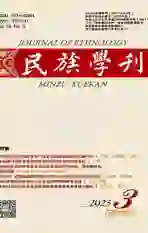Trade Control in Khams during the Early Qing Dynasty and Its Reasons
2023-07-31LiZhiying1,TianMaowang2
Li Zhiying1, Tian Maowang2
DOI:10.3969/j.issn.1674-9391.2023.3.014
Abstract:
Since the late Ming and early Qing dynasties, Dajianlu (or Dar-rtse-mdo) and some other places along the Jinsha River in Khams, gradually became the main hub of trade, political, cultural, and religious exchanges between the Qing, Mongols, and Tibetans. In the late 17th century, Mongolian and Tibetan units successively entered the southern part of Khams, and at the same time Wu Sangui rebelled against the Qing Dynasty. In this context, the Khams as a middle ground gradually became a principal area where the Qing, Mongols, and Tibetans interacted and competed with each other. The trading activities on Dajianlu and the Jinsha River became an important economic and political activity, allowing for the interaction and exchange between Mongols, Tibetans, Han, and Manchus. This is why the Qing Dynasty also started to pay great attention to the trading activities in this region. Then, how and why the Qing dynasty controlled trade around the Dajianlu area from 1681 to 1683?Based on Chinese, Tibetan, and Manchu documents, these issues have been examined in this paper.
Historical records indicate that after Wu Sanguis rebellion against the Qing dynasty, the Qing government was busy with a grip on northwestern Junggar Mongolia, and no longer had a hand to deal with Tibetan affairs. This increasingly prosperous center of trade between Mongolian and Tibetan turned into a headache for the Qing Dynasty. Emperor Kangxi was worried that Mongol trade would become a pretext for Mongol-Tibetan units to secretly ally with Wu Sangui in Dajianlu and the places along the Jinsha River in Khams. Moreover, he also wanted to prevent Wu Sangui, who found himself in a hopeless situation, from escaping to Qinghai and Tibet. At the same time, Emperor Kangxi was also concerned that a large number of war horses were being funneled through the tea-horse market to Wu Sangui and other forces hostile to the Qing Dynasty, damaging the Qing Dynasty. Based on the above considerations, the Qing government decided to impose strong control measures on the Mongolian-Tibetan trade activities in Dajianlu and the places along the Jinsha River in Khams from 1681 to 1683. Although this trade control did not fundamentally shake the power of Mongolian and Tibetan forces in Khams. This strict control policy led to a protracted dispute between the Qing government and the Mongol-Tibetan forces over trade issues in Khams, effectively reducing the trade area for the Mongols and Tibetans in khams and forcing them to withdraw of some of their troops from this area.
In conclusion,as for political and geopolitical location of Khams in the late Ming and early Qing dynasties, the central government of the Qing dynasty did not exercise direct and effective rule over the vast Tibetan areas, including Khams, nor was it concerned with the power expansion of Mongols in these areas from the mid-17th century onto the early 18th century. However, when Wu Sangui rebelled against the Qing dynasty, the Qing central government feared that the Mongol-Tibetan forces would cooperate with the Wu in the name of trade, so it felt forced to take action to control trade activities between Mongols and Tibetans in these areas in order to prevent a tripartite collusion. This is considered to be a main reason why the Qing Dynasty exercised a strong trade control in Khams from 1681 to 1683.
Key Words:
Wu Sanguis rebellion against the Qing dynasty; Qing dynasty; Khams; trade control
杂志排行
民族学刊的其它文章
- The National Security Implication of Social Governance in Ethnic Minority Areas in the New Era and Its Promotion
- Modern Road and Traditional Social Changes of Ethnic Minorities:Based on the Investigation of Puxiong Yi Society Along the Chengdu-Kunming Railway System
- From Little Tradition to Great Tradition:The Influence of the Gaitu Guiliu Policy on Social Life in Southwestern Hubei
- The Tusi System and the National Governance Approach in the Ming and Qing Dynasties
- 各民族日常生活实践中体现的中华民族共同体意识
- 民族地区推进中华民族共同体建设的时代价值、现实挑战与路径选择
